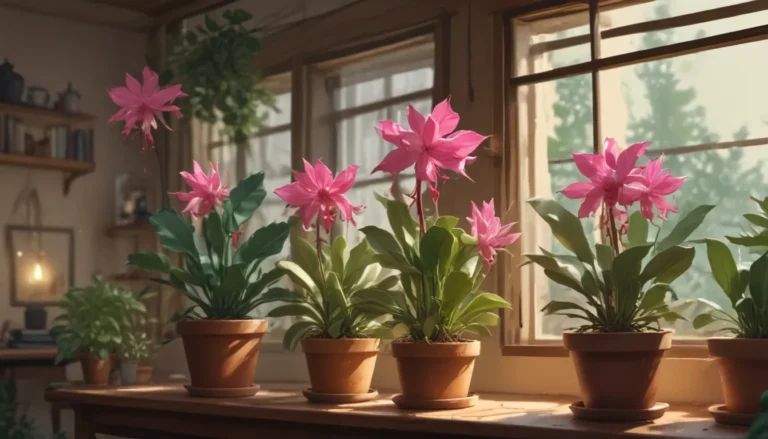Ultimate Guide to Managing Perennial Asters in Your Garden

Perennial asters, members of various genera in the Asteraceae family such as Aster, Eurybia, and Symphyotrichum, are beloved for their profusion of tiny, daisy-like blossoms that grace our gardens every year. With numerous species and cultivated varieties ranging in height from six inches to over six feet, these stunning perennials can quickly take over your yard if not properly managed.
In this in-depth guide, we will explore 21 valuable tips to help you successfully manage perennial asters in your landscape. Whether you are a seasoned gardener or new to the world of asters, you will find useful information to ensure these beautiful flowers bring joy to your garden without becoming overwhelming.
Understanding Perennial Asters: The Good, the Bad, and the Ugly
Perennial asters, especially native species, are known for their vigorous growth habits. They spread via thick rhizomes and self-sow abundantly, filling our gardens with colorful blooms that attract pollinators such as bees, butterflies, and birds. While these flowers are a welcome sight in any garden, they come with their own set of challenges that require proactive management.
Challenges to Contend With:
- Control Spreading: Prevent these plants from taking over your yard.
- Manage Legginess: Address top-heavy stems and prevent flopping.
- Address Bare Legs: Maintain foliage and prevent withering.
- Inhibit Fungal Growth: Prevent powdery mildew and other fungal issues.
To cultivate a healthy, flourishing garden filled with perennial asters, you must learn how to navigate these challenges effectively. Let’s dive into how you can manage these issues and enjoy the beauty of asters in your outdoor space.
How to Manage Perennial Asters: 21 Tips for Success
To ensure your perennial asters thrive while maintaining a well-manicured garden, follow these expert tips categorized into four key areas of management:
Control Spreading:
- Grow in Containers: Utilize pots with ample width to accommodate mature plant dimensions.
- Deadhead After Blooming: Prevent seed dispersal by removing spent flower heads promptly.
- Plant in Raised Beds: Inhibit root spread by growing in containers with solid bottoms.
- Divide Clumps: Reduce plant size and disrupt root spread by dividing clumps in the spring.
- Manually Remove Seedlings: Prevent unwanted growth by removing seedlings and applying pre-emergent herbicides.
- Physical Barriers: Plant in locations with boundaries to control root spread and seed dispersal.
- Choose Appropriate Locations: Opt for areas where plants can spread without invading other garden spaces.
- Use Landscaping Fabric: Inhibit self-sown seedlings by covering soil with landscaping fabric.
- Select Smaller Varieties: Choose petite asters that are easier to manage.
- Hybrid Cultivars: Consider hybrids that are less likely to produce fertile seeds.
Manage Legginess:
- Pinch Growing Tips: Promote bushy, compact growth by pinching off growing tips.
- Stake Tall Varieties: Prevent top-heavy stems from flopping by using stakes for support.
- Position Varieties Strategically: Place shorter varieties in the front to support taller ones.
- Avoid Overfertilizing: Native types especially should not be overfertilized.
Address Bare Legs:
- Deep Watering: Prevent dehydration during heatwaves by watering plants deeply in advance.
- Strategic Plant Placement: Hide bare stems by positioning shorter varieties in front of taller ones.
Inhibit Fungal Growth:
- Adequate Spacing: Maintain good airflow by planting at appropriate distances.
- Regular Weeding: Improve airflow and reduce humidity by weeding regularly.
- Avoid Overwatering: Prevent fungal growth by avoiding excessive moisture in the soil.
- Targeted Watering: Water at the base to avoid wetting leaves and activating fungal spores.
- Monitor Plants: Check for fungal infections regularly and remove affected leaves promptly.
Start Small and Grow: Cultivating a Beautiful Aster Garden
With these 21 tips in hand, you can confidently manage perennial asters in your garden and enjoy their beauty without the worry of overgrowth. Start small by experimenting with a variety or two in containers or raised beds, allowing you to appreciate the blooms without overwhelming your garden space.
Consider native varieties to support local pollinators and birds, creating a vibrant ecosystem in your outdoor space. As you gain first-hand knowledge of asters and their behavior, you can expand your garden and nurture well-behaved plants that bring joy year after year.
By dividing plants regularly, practicing proactive management techniques, and staying attuned to your garden’s needs, you can create a thriving garden filled with stunning perennial asters.
How do you manage your asters? Share your tips and experiences in the comments below!
For more insights on growing perennial asters, check out these informative guides:
- 11 Perennial Aster Species for Summer’s Last Hurrah
- How to Grow and Care for Calico Aster in the Late Summer to Fall Garden
- How to Grow and Care for Sky Blue Aster
- How to Grow Tatarian Aster, a Dynamic Late-Season Bloomer
In conclusion, with the right strategies and proactive approach, you can cultivate a beautiful garden filled with perennial asters that bring color, life, and joy to your outdoor space. Remember to stay attentive, experiment with different management techniques, and enjoy the beauty of these stunning flowers in your landscape.
With this comprehensive guide, you now have a wealth of knowledge to successfully manage your perennial asters and create a thriving garden space. By incorporating these tips and techniques, you can transform your outdoor space into a vibrant haven filled with colorful blooms and buzzing pollinators. Let your love for gardening bloom alongside your asters, and watch your garden flourish year after year.





